When VR makes all the sense
Since 2006, when PlayStation and Sony ventured into launching a low-cost product that would seek to penetrate the masses and finally turn Virtual Reality into something massive, many things have happened that give us different perspectives on what the present and future of this technology is, which is undoubtedly impressive and seems to be ready to be consumed by everyone, but due to different factors, continues to raise many doubts that have to do with its application and viability within modern gaming. Curiously, several of the crazy internal teams at SIE Japan Studio have put their efforts into justifying the famous PlayStation VR, but at least in my opinion, I think that no one, neither of them nor outside of them, had hit the nail on the head as well as they have with the spectacular ASTRO BOT: Rescue Mission.
It’s one thing to create an immersive experience that shows off the potential of a device like the PlayStation VR, but it’s another thing entirely to make the very act of being immersed in a virtual world a direct gameplay mechanic that the title in question simply can’t function without. ASTRO BOT: Rescue Mission takes this concept, makes it its own, and takes it to a level that, at least in my experience, I’ve never seen before. On the surface it may look like a 3D platformer without much to offer, but I can assure you that as soon as you put on the headset and beat a few levels, you’ll realize that Studio Japan has achieved something extremely special that you don’t see every day.
Spectacular application of technologies
The truth is that even though Virtual Reality seems to be starting to take a lot more shape within gaming, we have to accept that it is still a highly experimental technology in which a lot of developers are putting all kinds of crazy ideas, some that work and others that don’t. You will surely remember that when the PSVR was launched, it came with a demo package called Playroom VR, which included Robot Rescue. The idea was so good and even popular among early adopters of the device, that the decision was made to make it into a full game. Thus, ASTRO BOT: Rescue Mission was born.
In addition to taking advantage of the enormous potential of a headset like PSVR like few others, ASTRO BOT: Rescue Mission does what probably no one has managed since we met the PS4’s DualShock 4 in 2013. Japan Studio’s new game shows off the way in which things like the aforementioned controller’s touchpad can be used to create functional and extremely creative game mechanics that directly contribute to the gameplay being presented to us.
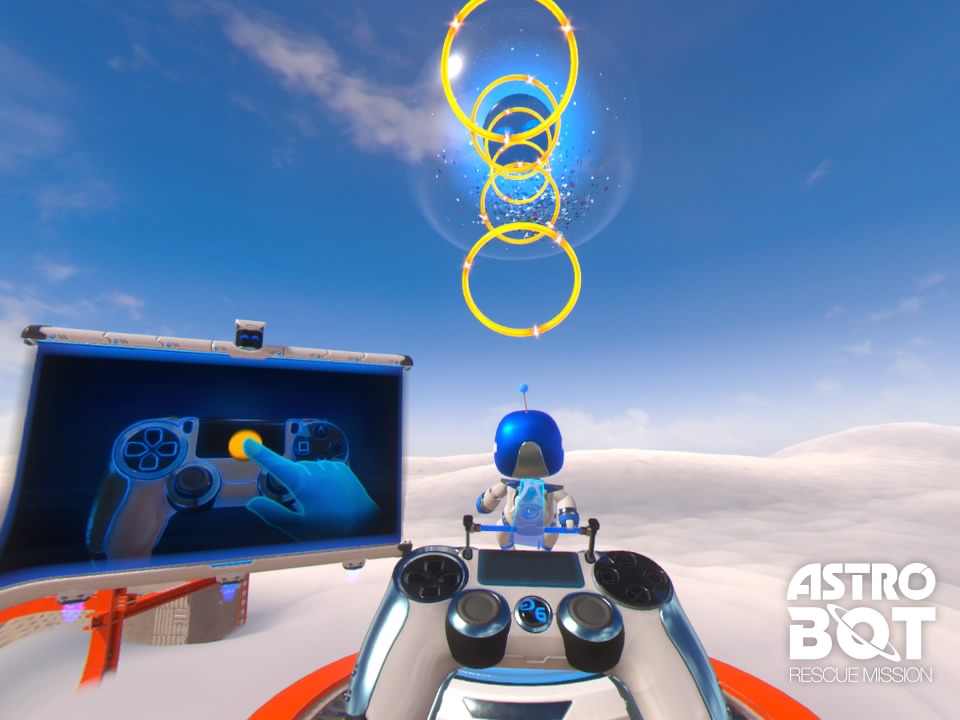
We could say that in ASTRO BOT: Rescue Mission we take control of two characters at the same time. First we have the small but brilliant and charismatic Captain Astro, who we see in front of us and who, of course, will be the most important participant in the adventure to achieve our goals. Then, we are in first person, represented by a much larger robot, which, in addition to acting as an active camera, has the function of helping the small mechanized being to make his way through the different levels.
Captain Astro is controlled in a very traditional and simple way. In addition to being able to jump and then activate a kind of Jet Pack to float and reach distant places, we can hit to defend ourselves from enemies or to interact with certain parts of the stage. The truth is that despite the simplicity of its controls and mechanics, the rhythm that is achieved thanks to the perfect weight of the character, makes this a very well-made and precise three-dimensional platformer.
Where ASTRO BOT: Rescue Mission feels completely different from anything else you’ve played before is when you start to see that turning your head to find hidden things or just see where your character can go is a core mechanic of the entire experience. Besides making you feel like you’re part of this world, it’s crucial to understand that if you don’t move, you’re bound to miss a lot of details and secrets. There are times when the camera moves in a traditional way like in any 3D Mario game, for example, but most of the time it’s fixed in one spot, making what’s within our reach entirely up to us. It’s truly magical to turn your neck and discover in the distance that there’s a hidden path we can take, not to mention the fantastic sense of scale that is achieved.
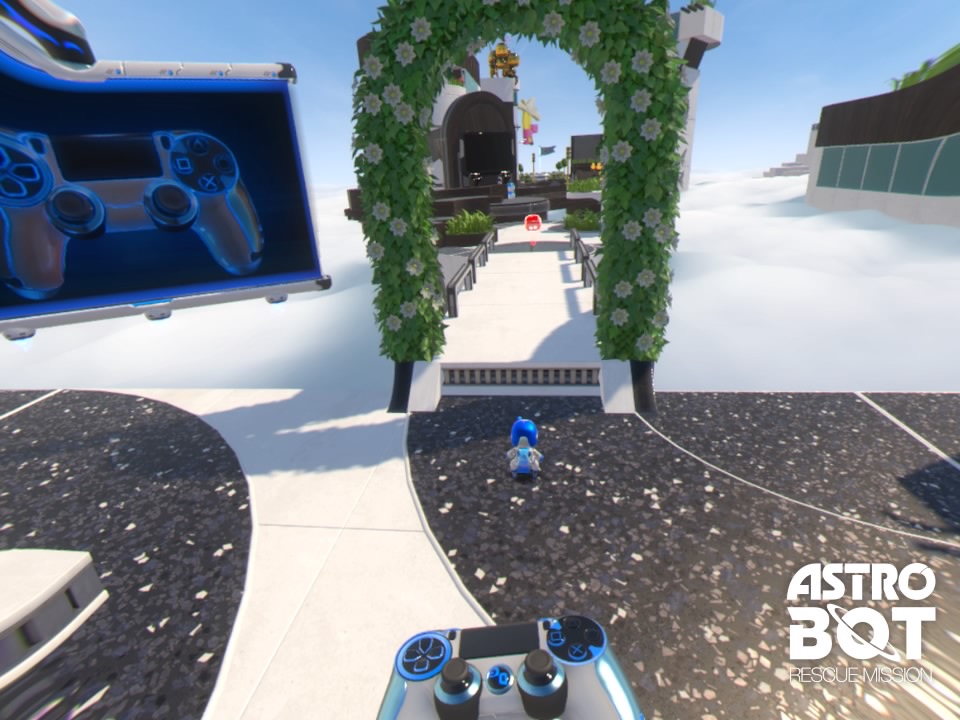
Added to what I just told you, there is the fact that our DualShock 4 is an extremely important tool to be able to progress. Aside from how great it is to see a virtual version of the controller in front of your eyes that reacts immediately to how you move it in real life, we have to say that it can be turned into a hook to generate ropes to make our character reach high places for example, or to destroy walls by pulling it backwards. You can also turn it into a hose that shoots water, or shoot shurikens to cut something or generate new platforms. My only complaint would be that at times, it doesn’t recognize what exactly you want to do.
There are times when you have to throw water at plants to turn them into new platforms, while also having to use your head to dodge the killer bees that are trying to destroy what we could consider your camera. These sections of ASTRO BOT: Rescue Mission are truly spectacular, as you are asked to keep an eye on two things at once. The use of the PSVR’s motion sensors is simply brilliant.
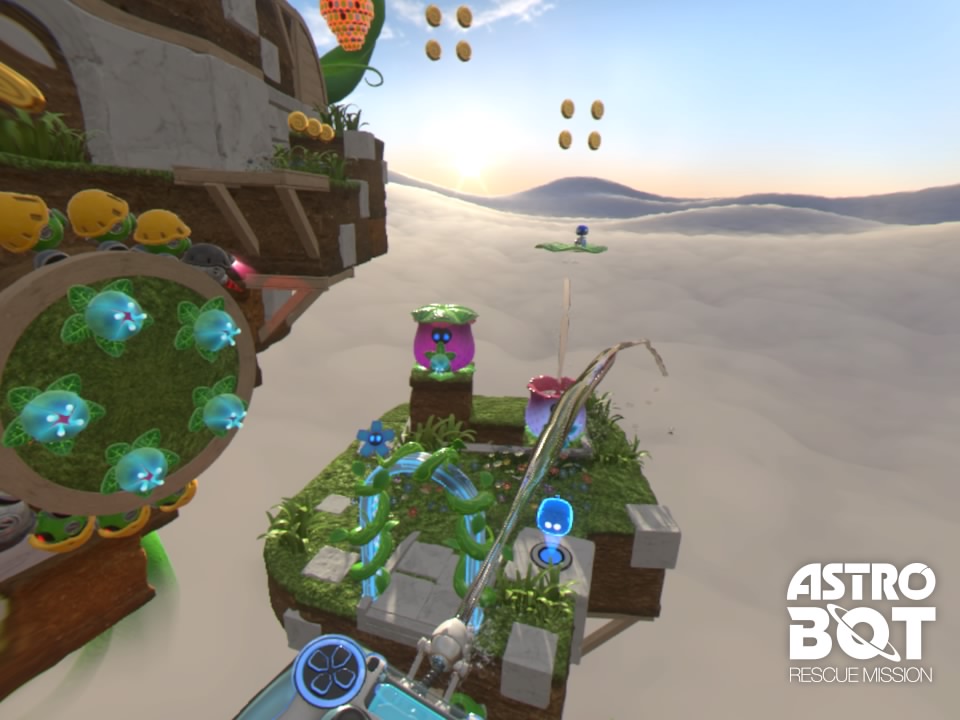
The levels you’ll find throughout the five worlds of ASTRO BOT: Rescue Mission are a character in themselves. In addition to having their own visual theme, they are usually used to introduce us to one of the mechanics I already told you about. Here, it’s clear that Japan Studio completely let their hair down and put all their creative potential into designing spaces that enhance all of their game mechanics. The way in which each of the elements we see on screen were placed to the millimeter is impressive; that is, the points where the camera stops are perfectly thought out so that we can use our gaze and neck movement to discover paths that are not possible from other perspectives. The 3D effect that PSVR allows shines brightly, as it is constant to see deep voids that will surely paralyze those who are afraid of heights.
Of course, there’s a lot more to do in ASTRO BOT: Rescue Mission levels than just walking from start to finish. Within these spaces, there are some hidden things that we must find. First, there are several robots that, of course, are waiting to be rescued by us. Normally, these are very visible, although several of them are hidden in places that you will surely find if you take your time to check your surroundings a little. Something interesting about these robots is that they are basically a currency that we use to enter new worlds or even to face bosses. If you just went straight ahead and didn’t stop for anything, you will most likely hit a wall soon and won’t be able to continue progressing within the game.
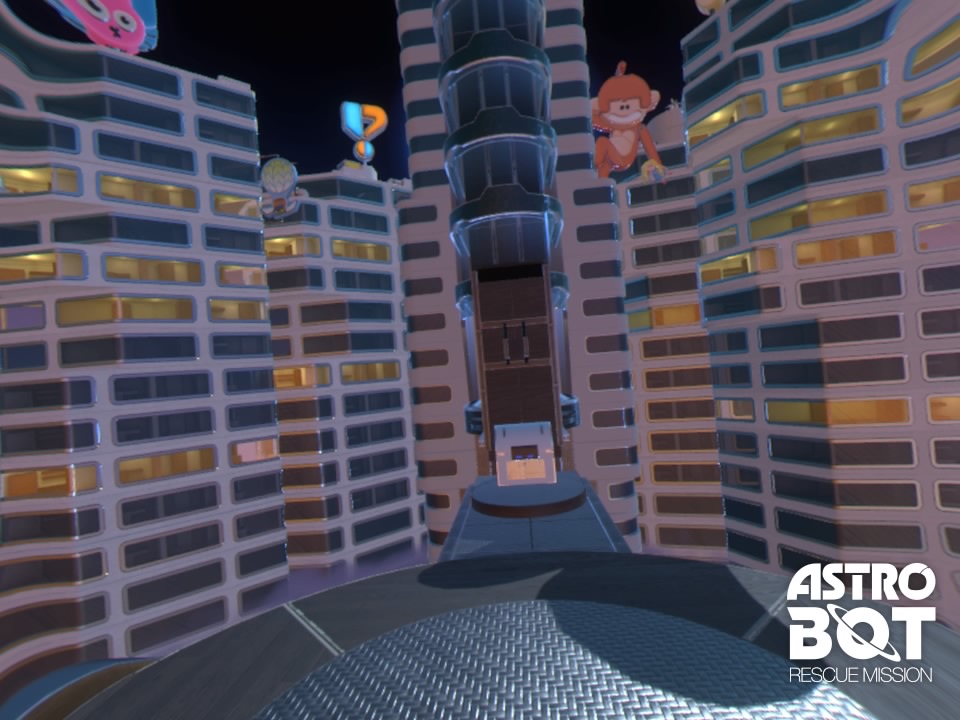
We also have chameleons that hide within the world using their camouflage techniques. Most of them are usually right under our noses, it’s just a matter of looking carefully to find them. These animals are even more interesting, because every time you find one of them, a special challenge level opens up for you. Just like in things like Donkey Kong Country, these areas challenge our skills and the truth is, I think it’s one of the parts that I’ve enjoyed the most in all of ASTRO BOT: Rescue Mission.
ASTRO BOT: Rescue Mission is a fantastic video game in every sense of the word, perhaps only let down by its short length (it’ll take you about six hours to complete it), as in addition to having solid foundations, it makes its more than classic genre feel fresh again and like something different from anything else out there. It’s extremely difficult to explain many of the feelings and forms of a game like this, because like everything in VR, you have to experience it for yourself to truly feel the magic that something like the PSVR has the capacity to generate.
Visual and auditory delight
Japan Studio’s games are usually truly special in the visual part. ASTRO BOT: Rescue Mission is no exception, although as in any other VR experience, the framerate must be set above everything else so that we don’t have any problems with motion sickness when we’re playing.
As you can see, ASTRO BOT: Rescue Mission opted for a highly cartoonish visual style to present its ideas. The plastic and material of almost all the elements we see on screen can be perceived first hand, and as I mentioned a few paragraphs ago, the 3D effect that PSVR allows is used in a way that I have rarely seen. The art direction is fantastic, presenting us with all kinds of crazy creatures, as well as vibrant colors that manage to make you feel like you are in a world that is totally impossible in our reality.

The game’s audio is also absolutely insane. Like other PSVR games, ASTRO BOT: Rescue Mission takes full advantage of the extra processing unit you need to have plugged into your PS4 for PSVR to work. We have true three-dimensional audio that can be heard even with headphones designed just for listening to music. This is used not only to immerse us in the atmosphere, but also as a gameplay mechanic. Often, the best way to find lost bots is to pay attention to ambient sounds to see if we can track them down.
ASTRO BOT: Rescue Mission is one of the best looking and most well-crafted games I’ve had the chance to experience on PSVR. The best thing is that, in addition to making great use of technology to really make you feel like you’re somewhere else, it uses visual and auditory elements to reinforce and fine-tune its core gameplay mechanics, a principle that I think all designers should follow to a greater or lesser extent.
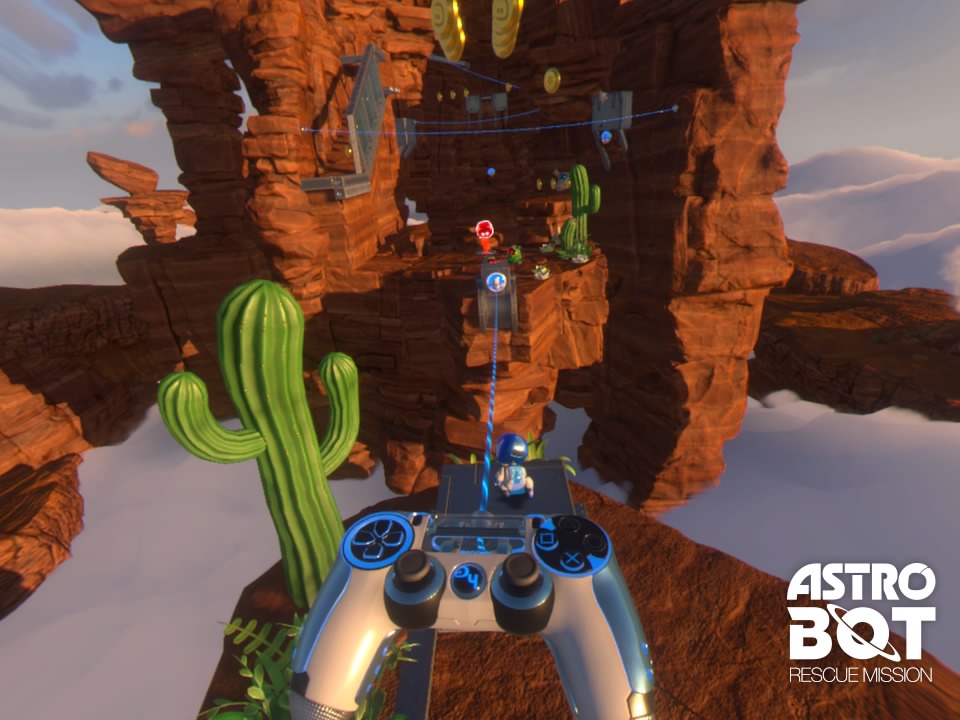
A fantastic video game
 If you’ve ever wondered what Nintendo’s approach to Virtual Reality technologies would be like, I’d bet we’d have something very similar to ASTRO BOT: Rescue Mission, and I’m even sure that when the people at the Mario company saw the result achieved by Studio Japan, they felt that they too could get some very interesting ways out of these devices. Of course, we’ll have to see how long it takes for those at Kyoto to bet on something like a PSVR, because let’s remember, normally when it comes to technology as such, the Big N is usually extremely cautious and even slow in the way it adopts it.
If you’ve ever wondered what Nintendo’s approach to Virtual Reality technologies would be like, I’d bet we’d have something very similar to ASTRO BOT: Rescue Mission, and I’m even sure that when the people at the Mario company saw the result achieved by Studio Japan, they felt that they too could get some very interesting ways out of these devices. Of course, we’ll have to see how long it takes for those at Kyoto to bet on something like a PSVR, because let’s remember, normally when it comes to technology as such, the Big N is usually extremely cautious and even slow in the way it adopts it.
Extremely well thought out mechanics, levels designed with a high degree of detail and of course, unparalleled use of both the PSVR and the DualShock 4, are some of the wonderful values that you can find within ASTRO BOT: Rescue Mission. Seriously, if you have one of the PlayStation Virtual Reality viewers, you have to get this game as soon as possible, because I’m sure that in a very short time, it will finally click why you invested in said device. No, the title cannot be consumed without a PSVR, because it would completely lose all its meaning and its objectives.
The reasons for having a PSVR are few without a doubt, but I think they are becoming more and more solid and finally, they begin to give proof of why the company risked so much in entering a world that, at least until now, continues to fight not to be left again as a mere fad that did not end up consolidating in the market. There is magic in Virtual Reality, you just have to figure out how to harness it more often.
#Review #ASTRO #BOT #Rescue #Mission

